Master How to Keep Score in Golf: A Beginner’s Guide to Scoring with Confidence

Table of Contents
Key Takeaways
- Knowing what par means is a really good first step. It acts as a measure for evaluating play on every hole, impacts course strategy, and affects the pace of play.
- Understand basic golf scoring terminology. Understanding how to keep score in golf terms Learning such as bogey, birdie and eagle will help you better understand the game and communicate with others while on the course.
- Understand the variations in scoring styles such as stroke play versus match play. This is going to get you on the right path to figuring out which method works best for you and your game!
- Getting the scorekeeping right is of utmost importance. Consider using a standard scoring method and check scores with your playing companions after each hole to help ensure integrity.
- Integrate technology into the classroom! Leverage mobile applications and digital scorecards to improve your scorekeeping precision and take your golfing experience to the next level.
- Be adaptable to course conditions and adjust your strategies accordingly, focusing on personal improvement rather than just the scores to foster a positive mindset.
Keeping an accurate score is key to measuring your progress and enjoying the game. In golf, you keep score by counting strokes on each hole. Then you simply sum them all up for a cumulative score at the end of the round.
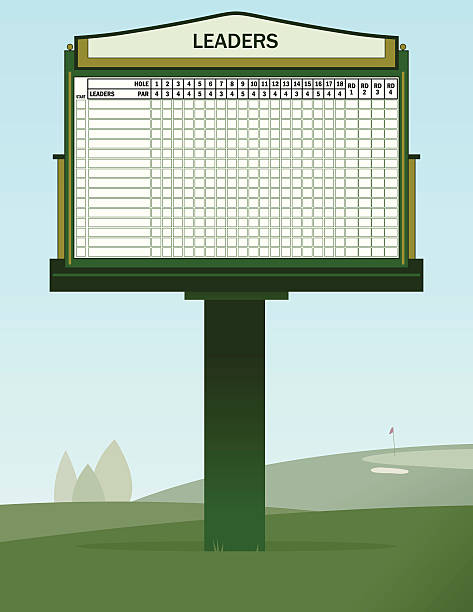
In golf, every hole has a par, a predetermined number of strokes it should take a player to complete the hole. Players aim to complete the course using the least number of strokes. In fact, terms such as birdie and bogey come from the practice of keeping score below or above par.
Learning how to keep score in golf will not only make you a better player, it will make playing golf more fun. This ultimate golf score guide will take you through how to keep score in golf one step at a time.
Understanding Golf Scoring

An accurate portrayal of golf scoring terms is important to help educate beginners and proficient golfers alike. By familiarizing oneself with key concepts, rules, and scoring methods, golfers can improve their total score and enjoy the experience more fully.
What Is Par in Golf?
Par is a theoretical standard for the number of strokes an expert golfer might take to make a hole in one. It is used as a standard by which the quality of scoring is measured. For example, a par 4 hole should ideally take four strokes to complete.
Why Understanding Par is Important to Strategy? Golfers will look for birdies (one stroke below par) on shorter par 4s, but will play conservatively on par 5s. Holes can be different par, with par 3s needing fewer strokes, focusing on accuracy.
Key Terms Every Golfer Should Know
Understanding key terms every golfer should know such as bogey (one over par), birdie, and eagle (two under par) help you better understand the game of golf. For instance, if a golfer scores a 3 on a par 4 hole, they get a birdie.
Penalties, like strokes added for hitting a ball out of bounds, are the ultimate score wreckers.
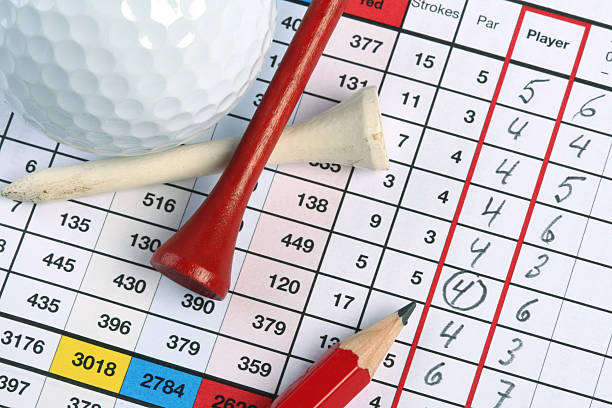
Overview of Golf Scoring Formats
Popular scoring formats include:
- Stroke Play: Aim for the lowest total strokes over the round.
- Match Play: Compete hole by hole against an opponent.
- Stableford System: Award points based on scores relative to par.
Each of these formats works well for varied skill levels. For example, match play may be less intimidating for novices. Stroke play is typically the format of choice in competitive environments.
Stroke Play Essentials
Stroke play is the most common and basic form of golf. The goal is to get through each hole in as few strokes as you can, and the player with the lowest overall score wins.
It includes gross and net scoring formats. In gross scoring, a player’s handicap is ignored, but in net scoring it is taken into account to help equalize competition among players with different skill levels.
A player’s final score per hole is determined by the number of total strokes accrued. Birdies, bogeys, and eagles are a few terms that emphasize performance in relation to par.

How Stroke Play Works
To keep score in stroke play, players write down their strokes on a scorecard hole by hole. At the conclusion of the round, the scores are tallied, with all of the holes counting in a very even manner.
Each score on each hole matters because it feeds directly into the cumulative score, which determines where a player finishes in the tournament.
Common Mistakes in Stroke Play Scoring
All too often, a common mistake in keeping score is miscounting strokes, or forgetting to add penalties which can cause a rather significant miscalculation.
To prevent these errors from occurring, players must recalibrate their scores, hole by hole. They should make sure their players know the penalty rules inside and out as penalties can quickly increase a score by one or two strokes.

Best Practices for Accurate Scorekeeping
Writing with a pen or pencil makes it impossible for a player’s score to be misrepresented or tampered with.
In all cases, having a standard playing method for recording scores can reduce misunderstanding. Spectators, partners, and competitors must take initiative to confirm scores with one another after each hole to maintain utmost accuracy and integrity during competition.
Match Play Insights
Match play is a unique format in golf that emphasizes head-to-head competition, where the goal is not merely to accumulate strokes but to win individual holes against your opponent.
Here’s how you can play to understand the nuances of match play so that you can become a more well-rounded, smarter golfer.
Basics of Match Play Scoring
Basics of Match Play Scoring Unlike stroke play, match play awards points according to what it takes to win the most holes. Each hole is won by the player who takes the fewest strokes for the hole.
So, for example, Player A gets a 4 on a hole. If Player B scores a five on the same hole, Player A wins that hole. In order to win an individual match, you need to win more holes than your opponent.
Wait a second… it’s not all about the number of strokes! Individual performance matters more than any other game. Even if a player loses the match, they can still come out a winner by stomping their opponent on certain holes.
Differences Between Stroke and Match Play
A useful comparison shows key distinctions:
| Feature | Stroke Play | Match Play |
|---|---|---|
| Scoring Method | Total strokes | Holes won |
| Strategy | Consistency is key | Target opponent's weaknesses |
| Psychological Focus | Personal bests | Direct competition |
In match play, it’s a different story. Players are more likely to take risks if they can win individual holes.
By comparison, stroke play rewards the more cautious route — consistency is king.
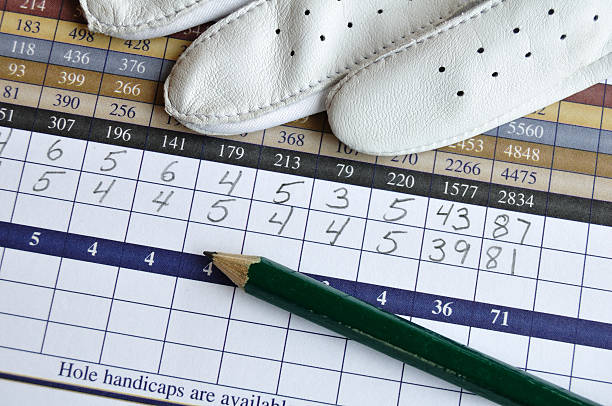
Tips for Beginners in Match Play
Tips for Beginners in Match Play
For beginners, figuring out your opponents’ strengths and weaknesses can help give you an advantage. Practicing situational opportunities can help create confidence and comfortability within the match play dynamic.
Basic tactics, such as taking the aggressive line on the short holes and playing smart on the long holes, will win the day.
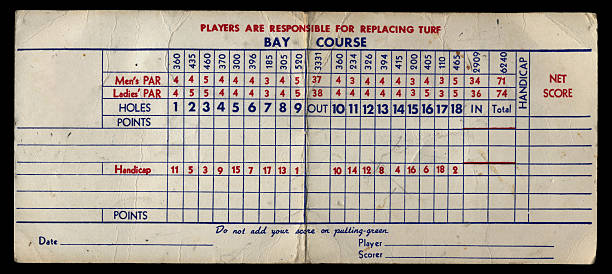
The Role of Handicaps
An important tool in the game, a golf handicap is essential in scoring and helps level the playing field for golfers of all abilities. Handicaps are a common golf term used to adjust a golfer’s score according to their potential ability, creating equitable access to fun for both beginner and proficient golfers alike.
Understanding Golf Handicaps
A golfer’s handicap is made up of a number of different factors, including their average score and the course rating.
Course Rating Course rating is a measure of how difficult a course is and plays a large factor in the calculation of one’s handicap. For instance, if a player always shoots 90 and the course they play is rated 72, that player’s handicap would be different.
This handicap will go up or down if they play on a course rated at 80. Consistently posting 18-hole scores keeps a handicap current, lowering or raising it when the player’s ability shifts.
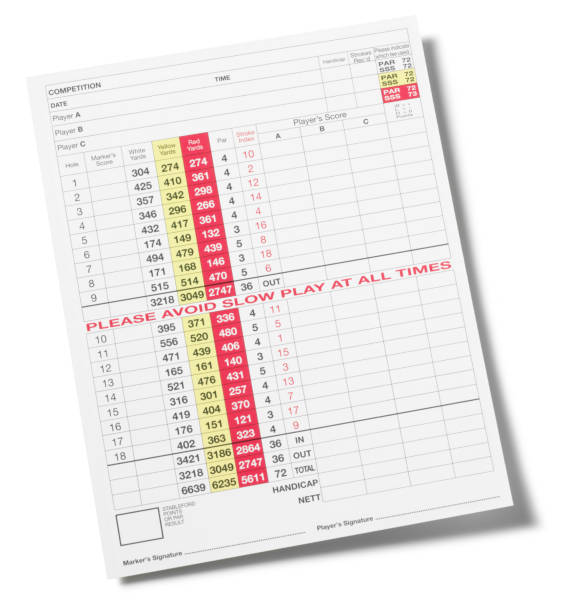
Calculating Your Handicap Accurately
To calculate a golf handicap, begin by collecting your past scores—preferably from a minimum of 20 rounds. Use the formula: (Adjusted Score – Course Rating) x 113 / Slope Rating.
This technique gives you a very accurate handicap index. It’s crucial to use recent scores to reflect current performance accurately, and regular updates ensure fair competition among peers.
How Handicaps Affect Scorekeeping
Handicaps come into play right at the top of the scoreboard. For instance, if a golfer’s official handicap is 10 and they shoot an 85, their adjusted score (called a net score) would be 75.
Unlike stroke play, this adjustment has the power to decide an entire form of match play, making the knowledge of handicaps vital to having an equitable game.
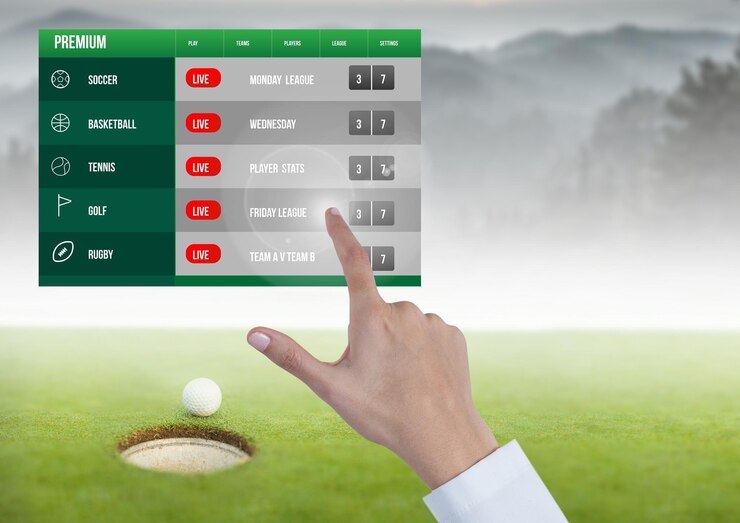
Utilizing Technology for Scorekeeping
The advent of technology in golf scorekeeping has revolutionized the way golfers track their total score and enhance their overall experience on the golf course. Whether through apps available on your phone or digital scorecards, these tools provide unique benefits that make the sport even more enjoyable.
Benefits of Mobile Apps in Golf Scoring
Mobile apps bring a number of important benefits, including real-time updates, letting players view scores in real-time. This keeps the feature conducive to easy sharing, allowing friends and family to share in the experience from afar.
Most apps will track performance over time, providing golfers with insights into how they’re trending and where they need to work the most. By exploring various apps, you can uncover customized features such as practice logs and swing analyses, which will help golfers of all skill levels improve their game.
Digital Scorecards vs. Traditional Methods
A side-by-side comparison shows distinct advantages and disadvantages of each method. Digital scorecards offer a new level of precision and user-friendliness that greatly minimizes potential for error.
In comparison, paper scorecards are a much more visceral, retro engagement. Digital methods are just more convenient, and people prefer convenience. The decision comes down to what you’re most comfortable using.
Choosing a scorekeeping method that fits with how you play will lead to a more enjoyable round.
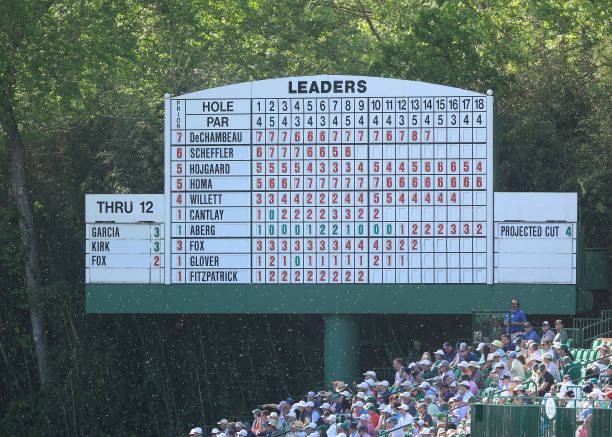
Real-Time Tracking in Tournaments
The impact of real-time tracking on tournament experiences for players and spectators cannot be overstated. Live scoring systems leverage cutting-edge technology to update scores in real-time, fostering a compelling and immersive atmosphere.
This immediate feedback aids players in adjusting strategies during competitive play, fostering a dynamic environment that elevates the entire event.
Adapting to Course Conditions
Adapting to golf course conditions is a big part of good scorekeeping in the sport. Many factors, including weather and course difficulty, can dramatically impact performance and results. By learning how these elements affect play, golfers can recalibrate their game plan and expectations accordingly, improving their overall golf scores.
Impact of Weather on Scorekeeping
We found that weather conditions, including wind, rain, and extreme temperatures, had a significant impact on shot accuracy. Just a 10 mph wind in the wrong direction can mean a 20-foot difference. So, it’s important to consider wind direction when you make your shot.
Golfers should manage their scores during adverse weather by selecting clubs that compensate for conditions, like using a lower lofted club in the wind. Mental resilience is just as important too. Being able to keep calm and carry on will go a long way in tackling the obstacles that come with weather’s unpredictability.
Adjusting Scores for Course Difficulty
Evaluating course difficulty takes into consideration conditions such as length, terrain, and hazards. Golfers need to recalibrate their scoring expectations on these factors and learn that certain courses will need a more tactical approach.
When you are presented with difficult holes, try to take them one piece at a time, thinking through one shot. Focusing on your own development rather than just achieving a number will make the process so much more rewarding and help you develop these skills.
Managing Penalties Effectively
Common course condition penalties like out-of-bounds or lost balls directly affect a player’s score. To effectively minimize penalties, you need to have a good sense of the course conditions and the game of golf.
Knowing your local rules can avoid a stroke or penalty and help you play your best golf. With the right approach and understanding, golfers can avoid penalties and stay focused on their performance.
Essential Scorekeeping Tips
Accurate scorekeeping in golf requires more than simply counting strokes; it involves understanding golf scoring terms and applying proper scoring methods. It takes a systematic, fun approach to improve performance and enjoyment, starting with golfers taking smart, proactive steps during their rounds.

Keeping Score Consistently
Creating a habit of scorekeeping is key. This might mean keeping score in the same way after every hole or at specific intervals throughout the round. Keeping your head in the game and your thoughts organized goes a long way towards avoiding mistakes.
For instance, if you use a dedicated scorecard or mobile app, scores will be recorded right away and with less chance for error. This uniformity ensures the highest level of accuracy in scorekeeping. In addition, it creates a culture of discipline which makes for stronger performance across the board.
Reviewing Your Scores Regularly
Just as golfers do after every round, scorekeepers should sit down and review their scores. This process makes it easier to identify trends and opportunities for progress. By tracking progress over time, golfers can not only celebrate their achievements but recalibrate their training based on where they are today.
Establishing achievable goals informed by previous scores is a great way to further inspire players, granting them some measure of success that is at once aspirational and achievable.

The Importance of Verification in Competitive Play
In competitive environments, the importance of verification cannot be overstated. This helps maintain the integrity of the game, but it helps level the playing field. Being honest in scorekeeping builds trust with players and is an important part of keeping the competitive environment healthy.
Nothing is worse than a score discrepancy that turns into a dispute – it’s bad for the spirit of competition and for the friendships built on the course.
Exploring Different Scoring Systems
Golf has a rich history of providing alternative scoring systems, each one better suited for a unique style of play and desired outcome. Mastering these complex systems is rewarding, creating a deeply satisfying game that hooks players to return.
By exploring different scoring systems, golfers will find what works best for their interests and skill level, ensuring a fun round for all.
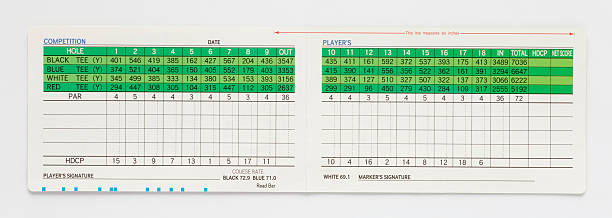
The Stableford System Explained
The Stableford scoring system Explained Points are awarded for the number of strokes taken on each hole in comparison to par. Players earn points for each hole according to their score compared to par: for example, a score of par earns 2 points, a birdie earns 3, and a double bogey results in 0 points.
This system rewards aggressive play since players are able to recover after bad holes without the stress of adding up high scores. Appropriate for casual and competitive play alike, the scoring system encourages a more laid-back vibe while still keeping players of all styles in the game.
Understanding Other Scoring Formats
- Alternate Shot: Teams of two take turns hitting the same ball, fostering collaboration and strategy.
- Skins Game: Players compete for each hole, with the winner taking the hole’s “skin.” Ties carry over.
- Best Ball: Each player on a team plays their own ball, with the best score counting for the team.
In addition to being fun and engaging, these formats foster positive competition and community, making them perfect for social events or friendly golf tournaments.
When to Use Each Scoring Method
What scoring method to use The answer will depend on the skill of the players and nature of the event. While Stableford could be the ideal system in a friendly match, a skins game would be more appropriate for a competitive outing.
Social play usually favors formats where fun is prioritized over cutthroat competition.
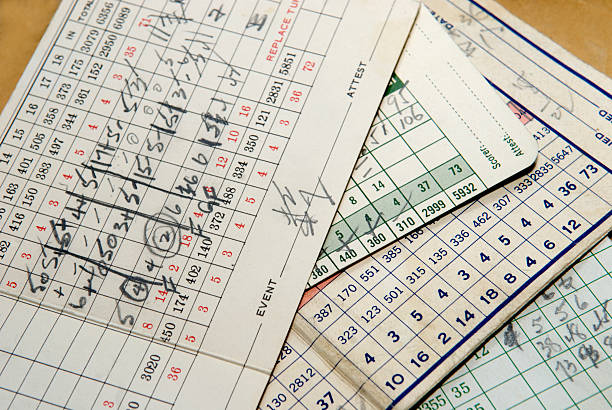
Conclusion
We hope our tips on how to keep score in golf have helped make this process a little less intimidating. You keep score very different in both stroke play and match play, and the use of a handicap system helps make it fairly competitive. Whether using an app or traditional scorecard, you will find it simple to keep your round organized and in order. Equally important, by adapting to the conditions on every course you play, you start to play your way into better golf. Keep in mind, nothing beats practice. The better you get at keeping score the easier it will be to teach others and the better you’ll get at keeping score.
Pack your clubs, take to the links, and begin making par. So, enjoy the game, take something away from every round you play, and enjoy the ride. Best of luck out there!
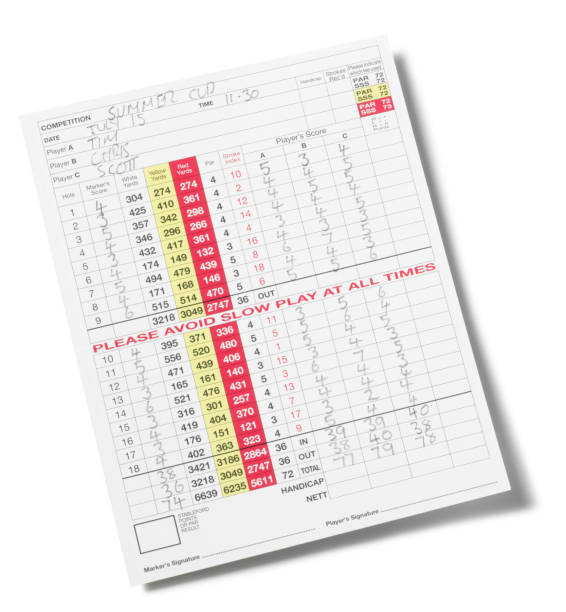
Frequently Asked Questions
How do I keep score in golf?
To keep score in golf, simply record the score for each hole on a scorecard, noting the golf scoring terms, and then add up the total strokes for the full round.
What is stroke play?
What is stroke play? In this golf scoring term, the player with the fewest strokes wins after all 18 holes have been played. Each player's score card reflects the sum of all their strokes, and the player with the lowest total score is the winner.
What is match play?
What is match play? In this golf scoring term, players compete against each other one hole at a time. The player with the fewest strokes on a hole wins that hole. The winner of the match is determined by who wins the most holes, not the lowest total score.
What are golf handicaps?
Handicaps help make the sport more equitable by allowing beginner golfers a fair chance to compete against proficient golfers. To level the playing field, a player's handicap is deducted from their total score, resulting in a net score that reflects their true scoring potential.
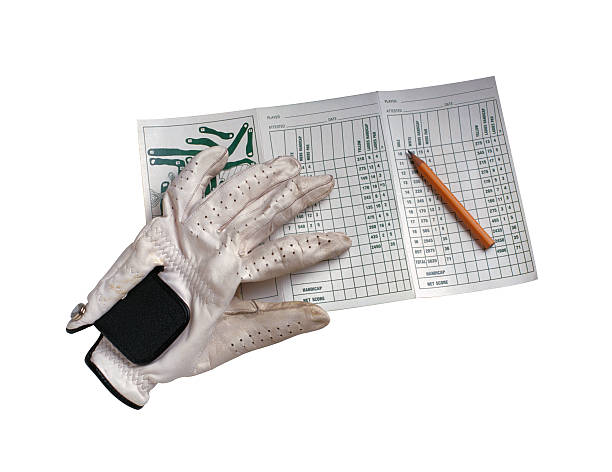
Can I use apps to keep score?
Can I use apps to keep score? These apps are a great way to track your golf scores, break down performance trends, and get a better picture of the golf course you’re playing. So, why do we keep score in this sport?
How should I adjust my scorekeeping for different course conditions?
To modify how I keep score for different golf course difficulty levels, I must set realistic expectations. If the course is difficult, my total score may be higher, so I should focus on improving my golf swing instead of solely tallying scores.
What are some essential tips for keeping score in golf?
Tip #6: Never forget to verify your total score, and don’t clutter your scorecard; write your score right after each hole. Eliminate distractions and stay engaged to help you call every shot consistently over the course of your round.
This article contains affiliate links. If you purchase through them, I may earn a small commission at no extra cost to you. See our Affiliate Disclosure.






